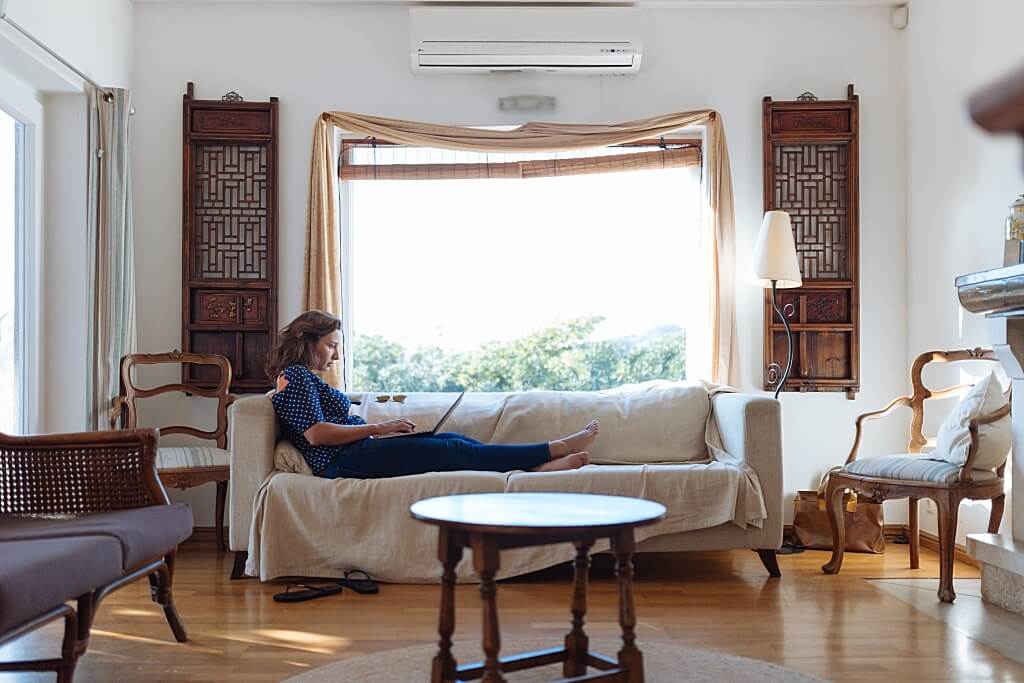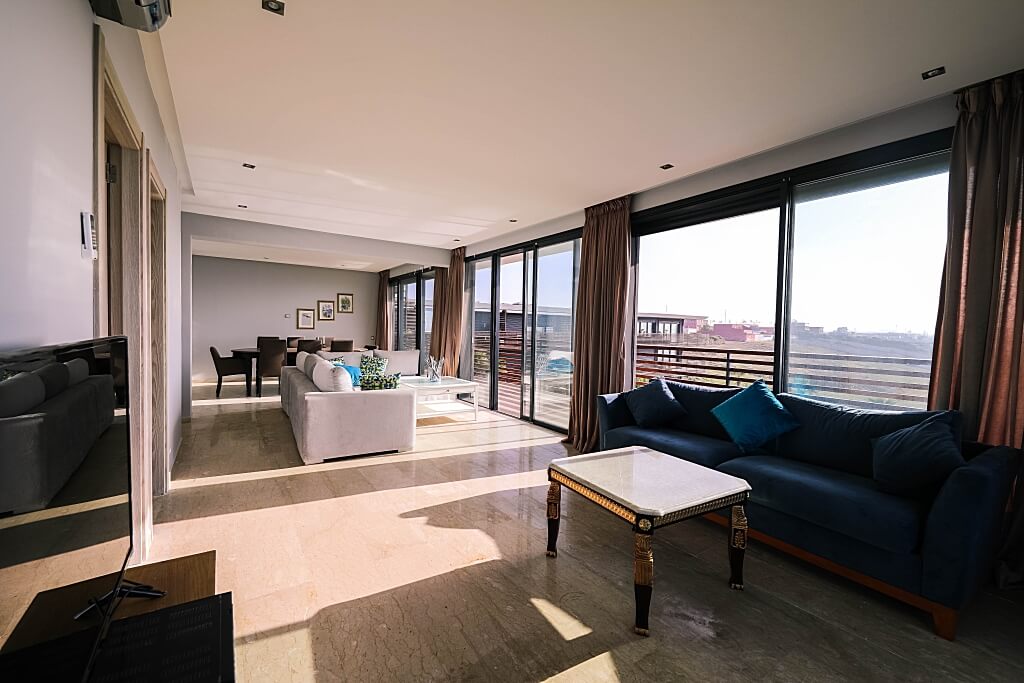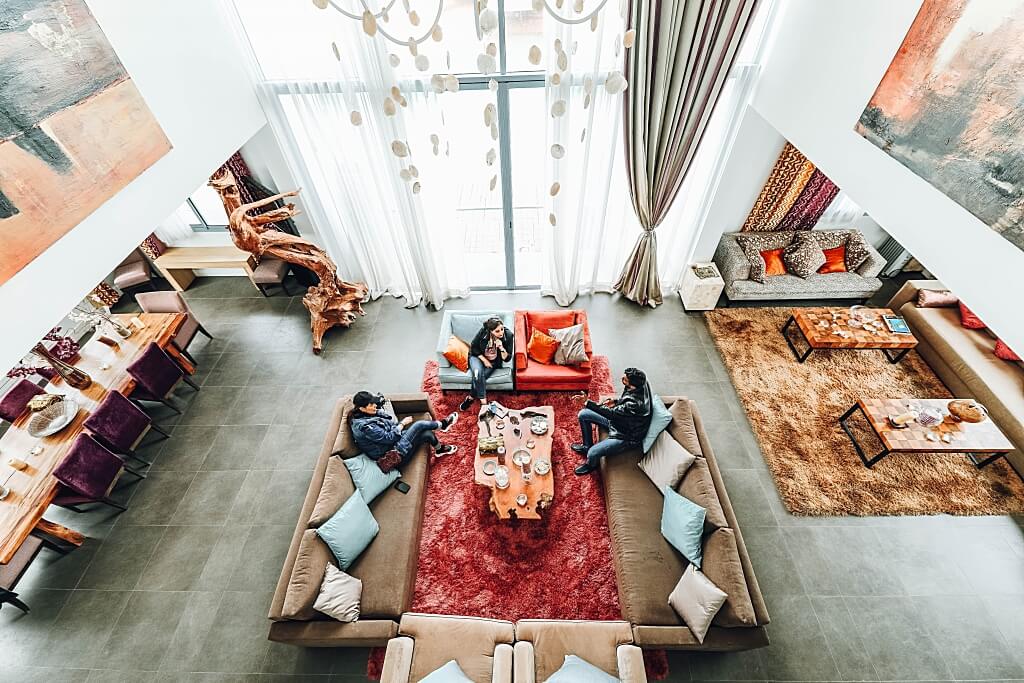Space plan and interior design – A study.
27/09/2022 2022-09-27 17:36Space plan and interior design – A study.
Space plan or a floor plan is an orthographic projection drawing viewed from above ground looking down. The space plan or the floor plan is the most basic element of the interior design process. It starts with an extensive analysis of how the space is to be used, for what purpose and all the functional elements that needs to be used in the space. The interior designer then draws up a plan that determines the different zones of the space and the corresponding activities that will take place in those zones. The space plan is finished by adding details of all the furniture, equipment and hardware placement.
Focal points of a room
The space plan or the floor plan begins with the structure of the room and its focal points. These could be windows, doors or built-in units. The features in the focal points need to be balanced in the room. If the features are not balanced, it needs some additions or deletions to balance the structure of the space. Remember that the human eye is drawn to focal points, and will scan a space when entering it.
Perception of space
The perception of space is based on several factors such as body size, their lifestyle, needs and requirements. Different space measures suit different size people: one person’s claustrophobic box is another’s cosy nest.

It is essential to think about the space in terms of volume and not just the surface area, for example: if it were a fish bowl, the more pieces of furniture you add will displace the corresponding amount of the water from the fish bowl. So, the more elements you add to a space, the more volume it occupies. So, ensure not to clutter or overfill the space.
Prospect and refuge theory
It is a basic human psychological need to feel secure and home is essentially the one place that is specifically designed to satisfy the inherent need to feel safe and secure in a place that you call your own. The theory of “prospect and refuge” seeks to describe why certain environments feel secure and thereby meet basic human psychological needs. Theory states that Humans seek out to satisfy an innate desire when reviewing a space — to have opportunity [prospect] whilst being safe [refuge].

So, when designing a space plan or a floor plan aim to create both a prospect and a refuge in each room so one can feel enclosed, but also have a view beyond to the outdoors. Using the Prospect and Refuge theory to design and sketch a basic space plan, can make it more comfortable for the human experience.
Circulation passageway
Circulation passageway in a space plan is very crucial to design and it needs a lot of thought and attention because the circulation passageway in a space plan or a floor plan needs to feel organic and natural without being so abrupt or disruptive that it confuses the user. Ensure that the circulation passageway throughout the space plan or the floor plan follows an easy and economic pathway from the main door or entrance of the home to all the other main activity areas. 
Avoid Clutter
All design and décor elements look really flashy and pretty as a peach in a showroom. That does not mean the customer or your client needs to have it at home, even though they may like it at the time of purchase. Too much clutter in a space makes a space look less appealing that doesn’t mean minimalistic design is the way to go. Strike a healthy balance, the space should be able to reflect the perceived size of the room and most importantly should not block the circulation passageway.
Furniture
There will be furniture of all sizes and functions for every room. Planning your furniture is an essential step of space planning. With a scale drawing of the room in your space plan or cut paper shapes to size and place them in the room or the all-new augmented reality to superimpose furniture to know how the space would feel and function, with different furniture and designs, helps to work out the best possible arrangement of furniture and accessories. This ensures any product specification or communication error as it perfectly captures the size, dimensions and the corresponding colour for each piece of furniture.

Divide rooms and assign function
When designing a space plan or a floor plan for large or long spaces, divide different activity zones to assign a specific function or a series of functions, to each part of the divide in a room. For example: A large sized kitchen may be hard to get around and function effectively. This can be avoided if the kitchen is subdivided into a walk-in pantry and a kitchen.
Lighting and décor
When designing a floor plan or a space plan it is vital to plan the décor and lighting. This process is easier to work on when the lighting design and various décor elements are finalized before working in real-time and making hurried haphazard purchases that don’t fit right into the space you have designed. Work with the principles that vertical lines draw our eyes up and horizontal lines draw them across to extend or reduce the proportions of a room.
Paper up!
Wallpaper with a square grid or tiling a room in squares will give the impression that it is bigger than it is – the smaller the grid, the larger the room appears. So, don’t dismiss the wallpaper as an afterthought when your design for a space plan or a floor plan is ready to be executed. Wallpapers when used appropriately, will be an economical and a chic option.













